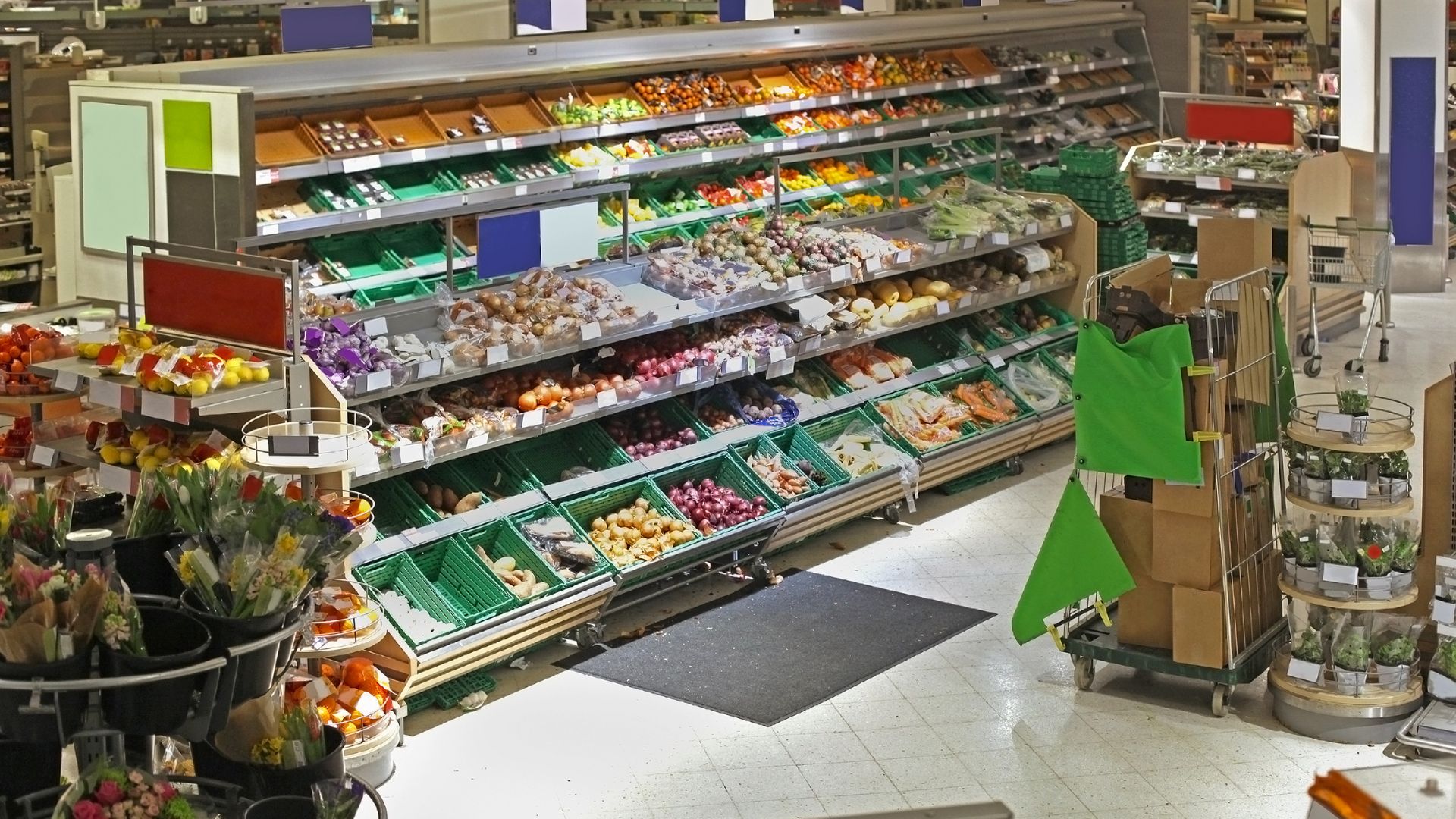Walking down any grocery aisle, the products you notice first are rarely random. They’re strategically chosen, priced, placed, and promoted to catch the shoppers' eye and encourage them to pick them up.
For Consumer Packaged Goods (CPG) brands, mastering this “4 Ps” of category management is critical because what happens on the shelf directly determines sales outcomes. Yet, many brands still struggle with inconsistent shelf execution, causing shoppers to walk away empty-handed.
Research shows that up to 82% of purchase decisions happen right at the shelf. However, nearly 30% of retail shelves are either out of stock or poorly merchandised at any given time, costing brands millions in lost revenue annually. This disconnect between strategy and shelf execution, driven by lack of visibility and real-time data, is where category management breaks down. To truly drive impact, the 4 Ps must not only be planned but actively monitored and optimized at the store level.
In this article, we will learn more about the 4 Ps of category management, examining how each element influences what customers see and select from the shelf. We’ll explore strategic insights tailored for CPG brands, highlighting how data-driven approaches and shelf-level optimization can turn trade investments into measurable retail success.
Key Takeaways
- The 4 Ps of category management—Product, Price, Placement, and Promotion—are crucial for optimizing on-shelf presence and driving sales for consumer packaged goods (CPG) brands.
- Effective category management aligns product assortments, pricing, placement, and promotions to influence shopper decisions through stronger shelf execution.
- Implementing data-driven planning, cross-functional collaboration, and real-time shelf monitoring enables brands to improve execution and adapt quickly to changes.
- Using AI-powered tools for planogram compliance, stock availability, and promotional accuracy is key to maximizing category performance and driving shopper purchase decisions or sales.
What Are the 4 Ps of Category Management?
Category management is a strategic discipline used by CPG brands to organize and manage product categories as individual business units. It involves coordinating product selection, pricing, placement, and promotions to meet consumer needs, enhance the shopper experience, and drive category growth. This holistic approach ensures that every element within a category works together to maximize sales and profitability.
At the core of effective category management are four fundamental pillars, commonly known as the 4 Ps: Product, Price, Placement, and Promotion.
- Product: Selecting the right mix of SKUs that meets evolving consumer preferences and trends. For CPG brands, this means focusing on products that resonate with shoppers and stand out on the shelf, driving both trial and loyalty. For example, a CPG brand might introduce gluten-free variants to cater to health-conscious shoppers.
- Price: Implementing pricing strategies that not only enhance profitability but also influence shopper perception and purchase decisions. For instance, setting a promotional price just below competitor brands to attract budget-savvy customers. Dynamic and competitive pricing ensures products remain attractive and compelling on the shelf.
- Placement: Optimizing product location on shelves, including shelf height, adjacency, and space allocation. An example is positioning a new product at eye-level next to bestsellers to increase visibility. Effective placement increases visibility, improves shopper navigation, and encourages product pick-up.
- Promotion: Designing targeted and relevant in-store promotions that boost product awareness and trial. Such as running a “buy one, get one free” offer during peak shopping hours to encourage trial. Promotions need to be aligned with shopper needs and executed flawlessly to convert attention into sales.
What are the Benefits of Category Management?
When applied correctly, category management delivers substantial benefits for CPG brands, especially when focused on on-shelf execution:
- Increased Sales: Strategically managed categories with optimized product assortment, pricing, placement, and promotion attract more shoppers and encourage purchases.
- Improved Margins: Better pricing strategies combined with efficient inventory control minimize markdowns and maximize profitability.
- Reduced Costs: Fewer SKUs and streamlined shelf management lower handling and operational costs while reducing waste.
- Improved Operational Efficiency: Coordinated category plans reduce inconsistencies across stores, ensuring uniform shopper experiences and stronger brand presence.
Strategic Insights for Each ‘P’
Regarding category management, a sharp focus on the 4 Ps is essential for CPG brands seeking to optimize their shelf presence and drive shopper engagement.
Each “P” plays a critical role in shaping what customers actually see and interact with on the shelf, ultimately influencing purchase decisions. Understanding and strategically managing these elements can elevate shelf effectiveness, improve category performance, and eventually boost sales for CPG brands.
- Winning Strategies for Product
Product is the foundation of category management. For CPG brands, aligning product selection to shopper preferences and market demand ensures that the right items are available and appealing on the shelf. It’s not just about having products; it's about curating the right mix that attracts and retains consumer interest, making the shelf an inviting and purposeful destination.
Key product strategies to enhance shelf impact include:
- Align product selection with consumer demand: Use sales data and shopper insights to identify which SKUs resonate most, ensuring shelf space is dedicated to high-performing, relevant products.
- Regularly review SKU performance: Monitor sales and turnover to keep the product assortment fresh and responsive to changing trends, preventing shelf clutter with slow-moving items.
- Use data for innovation: Identify opportunities for product bundling or introducing variants and limited editions that capture shopper attention and add visual interest on the shelf.
Also Read: How is AI helping CPGs Optimize their Assortment Strategy
- Winning Strategies for Pricing
Pricing directly affects shopper perceptions and purchase decisions at the shelf. Strategic pricing ensures that products are competitively positioned within the category, striking the right balance between value and profitability. For CPG brands, dynamic and psychologically savvy pricing can turn shelf browsers into buyers.
Effective pricing tactics to optimize shelf performance include:
- Competitive pricing analysis: Benchmark against category rivals to position your products attractively, ensuring price points align with shopper expectations.
- Promotional pricing: Use time-limited discounts or bundle offers strategically to boost sales velocity without eroding profit margins.
- Psychological pricing: Implement tactics like charm pricing (e.g., $1.99 instead of $2) and tiered discounts to influence shopper choices right at the shelf subtly.
- Winning Strategies for Placement
Where a product sits on the shelf is as important as the product itself. Placement drives visibility and convenience, playing a huge role in guiding shoppers’ eyes and hands toward your brand. CPG companies must optimize shelf layouts to ensure key products are front and center, making it easy for consumers to find and pick them up.
To maximize placement impact, CPG brands should:
- Use planograms and shelf mapping: Implement detailed shelf layouts that prioritize high-demand and promotional SKUs in prime locations such as eye-level shelves and end caps.
- Prioritize visibility: Ensure new launches, seasonal items, or high-margin products occupy high-traffic shelf zones to increase shopper interaction.
- Implement analytics and AI: Use in-store shopper behavior data and AI-driven shelf monitoring tools to continuously refine product placement, adapting quickly to what drives purchases.
Also Read: How CPGs Can Achieve 100% Planogram Compliance in Retail Stores
- Winning Strategies for Promotions
Promotions are critical to drawing shopper attention and converting interest into sales. However, for promotions to truly succeed, they must be executed flawlessly on the shelf where shoppers make decisions. CPG brands need to ensure promotional displays are compelling, relevant, and seamlessly integrated into the shopper journey.
Promotion strategies to enhance shelf influence include:
- Targeted promotions: Use data analytics to segment shoppers and tailor offers that resonate with specific groups, increasing relevance and uptake.
- Flawless in-store execution: Ensure point-of-sale materials, signage, and displays are properly placed and maintained to maximize visibility and impact.
- Integrated promotion channels: Combine in-store promotions with digital campaigns and loyalty programs to drive sustained engagement and repeat purchases.
Mastering each of these four pillars with an eye on what shoppers actually see and pick from the shelf allows CPG brands to optimize their category management strategies for real-world retail success. The right product, priced smartly, placed strategically, and promoted effectively creates a powerful combination that turns shelves into sales drivers.
How Can CPG Brands Implement Effective Category Management?
Effective category management is crucial for CPG brands seeking to enhance shelf performance and drive sales growth. It requires a strategic and coordinated approach that transforms data and insights into actionable shelf-level improvements. To help CPGs succeed, here are the key steps that can be implemented for effective category management:
Steps for CPGs to Implement Effective Category Management:
- Adopt Data-Driven Planning: Collect and analyze comprehensive data on category sales, shopper behavior, and inventory levels to make informed decisions across product selection, pricing, placement, and promotion.
- Foster Cross-Functional Collaboration: Align category managers, sales teams, marketing, and supply chain functions to ensure smooth execution and consistent messaging throughout the category management process.
- Use Technology and Analytics: Utilize AI-powered shelf monitoring and advanced analytics tools to gain real-time insights into on-shelf conditions and shopper engagement, enabling quicker and more precise interventions.
- Continuously Measure and Refine: Regularly track key performance indicators, including sales lift, stock availability, and promotional compliance. Use these insights to adapt strategies dynamically and optimize category performance over time.
CPG brands can enhance their category management efforts by following these steps, leading to improved shelf presence, increased shopper satisfaction, and stronger sales outcomes.
Also read: How Category Managers Can Champion Category Growth and Help Drive Incremental Sales
How Can ParallelDots Help CPG Brands Optimize Category Management?
ParallelDots offers advanced AI-powered solutions designed to provide CPG brands with real-time visibility and control over their on-shelf execution, enabling successful category management. It utilizes advanced technologies, including computer vision and image recognition. ParallelDots helps brands monitor product placement, stock levels, pricing accuracy, and promotional compliance across shelves in thousands of retail locations.
Key ways ParallelDots supports category management include:
- Real-Time Shelf Monitoring: Continuous tracking of shelf conditions using ShelfWatch ensures products are correctly placed and fully stocked to capture shopper attention.
- Planogram Compliance: Automated checks guarantee adherence to shelf layouts, maintaining consistent brand presentation, and maximizing promotional impact.
- Stock Availability Insights: Accurate detection of stockouts and low inventory allows timely replenishment to avoid lost sales.
- Promotional Execution Verification: Confirms that point-of-sale materials and displays are deployed as planned, enhancing promotional effectiveness.
How ShelfWatch Drives Category Management by 30%: A Case Study
A leading food products company faced challenges in ensuring that its branded displays were executed properly across more than 10,000 general trade outlets. Traditional methods, such as self-reporting and random field checks, were unreliable, leaving the brand unsure whether execution met its high standards for product visibility and planogram compliance.
By implementing ParallelDots’ ShelfWatch, which verifies assortment, placement, and promotional materials in real time, the company identified critical execution gaps, finding that some merchandisers performed well, while others fell short.
Within just two months, planogram compliance improved by 30%, resulting in improved shelf presence and driving cost savings through more efficient execution. ShelfWatch’s intuitive app also simplified communication by guiding field reps on the correct planogram for each outlet, streamlining rollout across thousands of stores.
This success story showcases how ParallelDots’ AI-powered technology enables CPG brands to transform trade promotion and category management efforts into tangible retail successes.
Conclusion
Category management is the foundation of a successful store execution for CPG brands, directly influencing what shoppers see and ultimately choose on the shelf. By mastering the 4 Ps and adopting a data-driven, technology-enabled approach, brands can improve product visibility, enhance availability, compliance and shelf visibility to boost overall sales.
ParallelDots stands out as the ideal partner for CPG brands aiming to elevate their category management through advanced AI-powered shelf monitoring and analytics. With real-time insights and automated compliance checks, ParallelDots empowers brands to execute flawless shelf strategies at scale.
Book a demo with ParallelDots today and discover how AI-driven shelf intelligence can transform your retail success.


